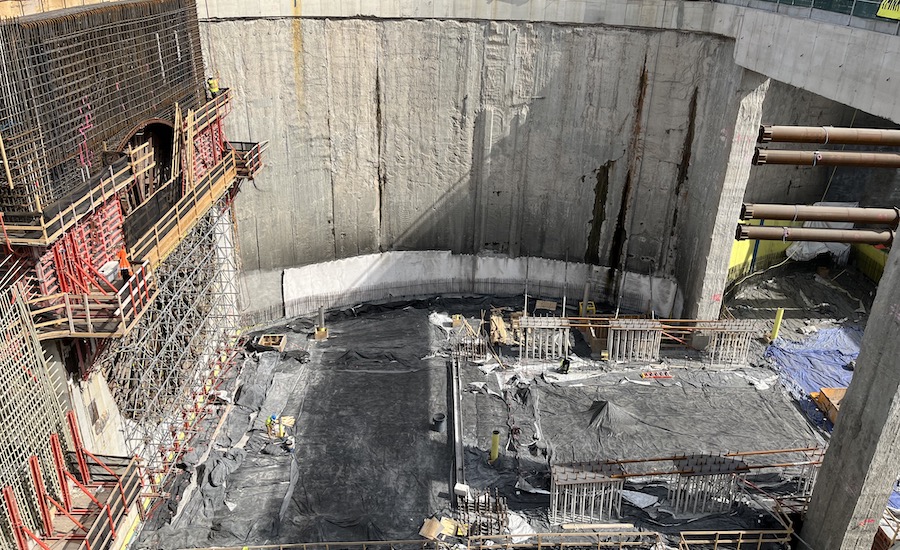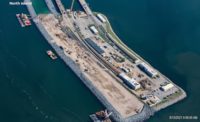The Virginia Dept. of Transportation has revised its schedule for the $3.9-billion Hampton Roads Bridge-Tunnel (HRBT) Expansion, pushing the projected substantial completion date back by 18 months, to February 2027.
Begun in November 2020, the project to increase the capacity of the key crossing beneath the main channel of one of the nation’s busiest harbors has experienced “unforeseen cost and schedule impacts,” according to a VDOT statement. The project calls for augmenting the existing 7,500-ft-long immersed steel tunnels carrying Interstate 64 traffic with two new 45-ft-dia. tubes that will double the number of lanes from four to eight. The ten-mile project corridor connecting the cities of Hampton and Norfolk also includes 14,000 ft of new marine bridges, replacement of more than two dozen existing bridge structures and lane additions.
On March 28, the agency announced that it had revised its comprehensive agreement with the design-build team of Hampton Roads Connector Partners (HRCP), a consortium that includes Dragados USA, VINCI Construction Grand Projets, Flatiron Constructors and Dodin Campenon Bernard.
VDOT says resetting milestone targets will “provide construction schedule certainty, enhance contractor schedule accountability, and reduce the potential of litigation,” while also preserving the original budget. The new schedule includes a $90-million incentive for HRCP to achieve early completion by the end of September 2026. The project team also will be eligible to receive additional compensation for the increased cost of materials associated with tunnel construction such as asphalt, fuel and steel and commodities related to marine operations, including precast tunnel segments, concrete cylinder piles and bulb tee girders. VDOT will receive a credit should the final cost fall below the bid cost.
In addition to being VDOT’s largest-ever highway construction project, the effort also boasts the agency’s largest single continuous concrete casting.
Carried out over 30 hours over the weekend of November 17-19, 2023, the pour of more than 5,400 cu yd of concrete created the base slab for a cell in the north island receiving shaft. There, the tunnel boring machine “Mary” will soon complete a journey begun from the HRBT’s existing south island in April 2023 to create the first of the two new tubes. The machine will then be repositioned for a return trip to the south island to bore the second tunnel.
According to information from Dewberry, which is part of the project team’s quality assurance team, approximately 180 cu yds of concrete were cast per hour, with 33 concrete trucks completing multiple roundtrips from the concrete batch plant to the site. Three concrete boom pump trucks also were involved in the pour. Field testing included measuring concrete temperature, slump and the amount of air present in the mixture. Concrete test cylinders were also prepared for laboratory testing to verify that concrete reaches the required strength.




Post a comment to this article
Report Abusive Comment